These deceptively easy looking studies are a great way to test & develop INDEPENDENCE & INTERDEPENDENCE between your left & right sides…
… as well as a great study in rhythm, technique, dynamics, and articulation.
The challenge here is to play two-handed (Left & Right) using two kinds of articulations (Legato, Staccato) at three levels of dynamics (soft, medium, loud) in every possible combination.
IMPORTANT: These are STUDIES, not exercises. This is so critically-important that it’s worth repeating: These are NOT EXERCISES. You will not improve by mindlessly repeating these over and over again with faulty thinking and poor technique hoping that things will magically improve. You can and will improve in leaps and bound by experimenting with different ways of using your brain and body until something clicks.
Study-Practice Tips
- Play with a metronome or click track.
- Record yourself, listen to the playback, and ask yourself if that is what you intended to play.
- This is not a race. If you feel overwhelmed, slow things down until you feel progress.
- These will seem very difficult, if not impossible at first, but don’t give up. You will master this if you persevere–guaranteed!
Technique Tips
- Physical & mental ease are inseparable.
- The ability to play these with freedom and ease is not about finger training; it’s about discovering a full-body choreography.
- The ability to play these is not just about independence of your left and right side; it’s also about interdependence, coordination, cooperation, and unification!
- Don’t try to keep time with your fingers. Allow your arms to lead and let your fingers go along for the ride.
- Move in natural curves, not in unnatural straight lines.
- Have some momentum going into each and every note.
- Chunk things by imagining you have one 10-finger hand, not two separate 5-finger hands.
- Keep time by singing what you intend to play–out loud or in your mind’s ear.
- If things feel stiff, count out loud 1 2 3 4 1 2 3 4 etc and make sure you are already preparing to play on the beat before.
- Legato = connected and played with the same tone quality.
- Staccato = short + disconnected.
- To play louder, think more downward speed at your fingertips; to play softer, think less downward speed of your fingertips.
- No flams! (make sure both hands play exactly together in time)
Pattern #1. Both Hands Legato, Medium Loud
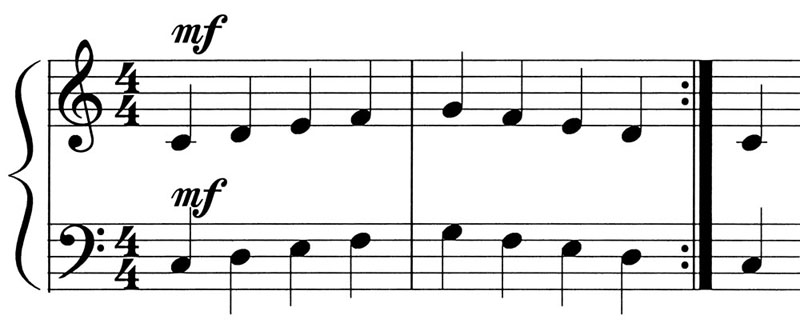
Pattern #2. Both Hands Legato: LH Soft, RH Loud
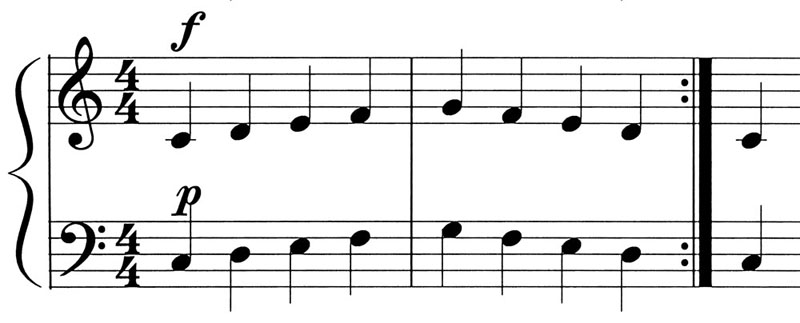
Pattern #3. Both Hands Legato: LH Loud, RH Soft
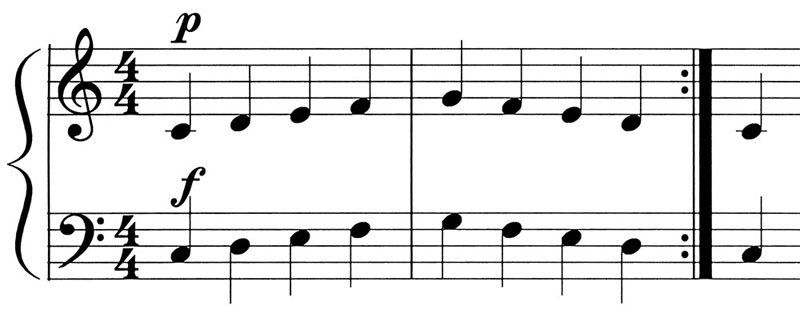
Pattern #4. Both Hands Staccato/Medium Loud
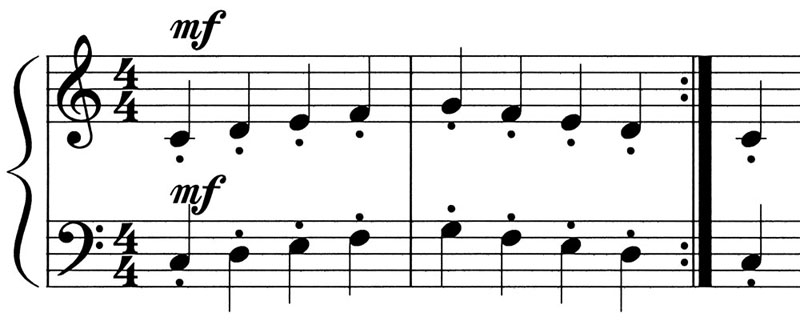
Pattern #5. Both Hands Staccato: LH Soft, RH Loud
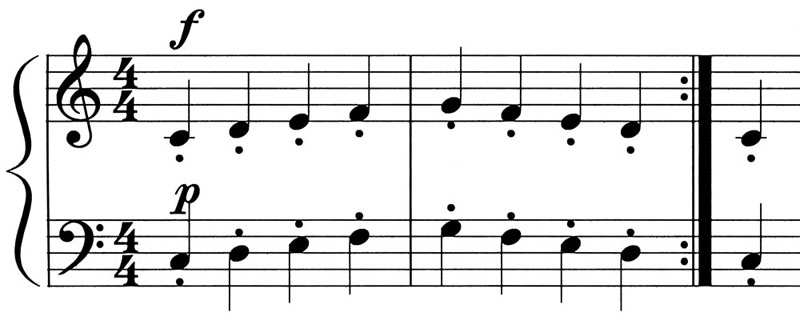
Pattern #6. Both Hands Staccato: LH Loud, RH Soft
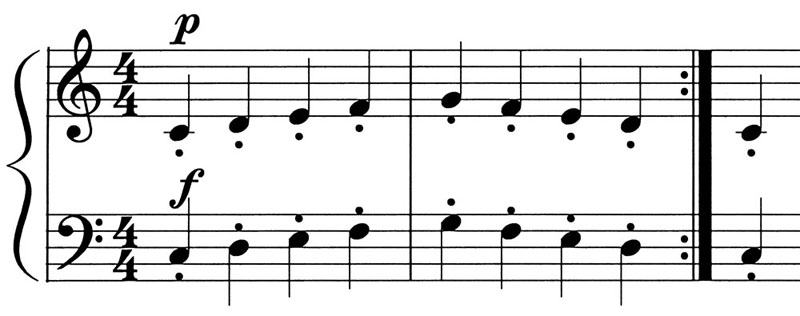
Pattern #7. LH Legato, RH Staccato, both Medium Loud
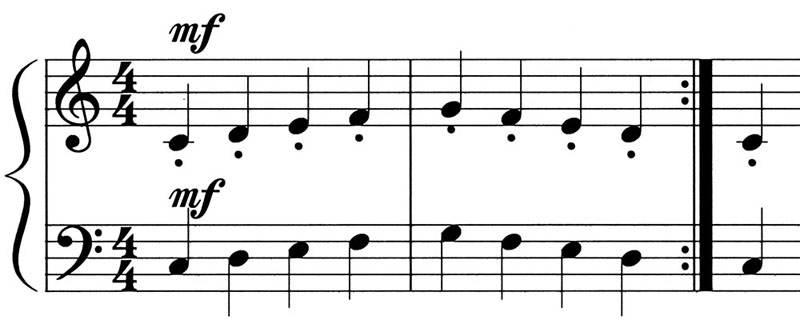
Pattern #8. LH Legato/Soft, RH Staccato/Loud
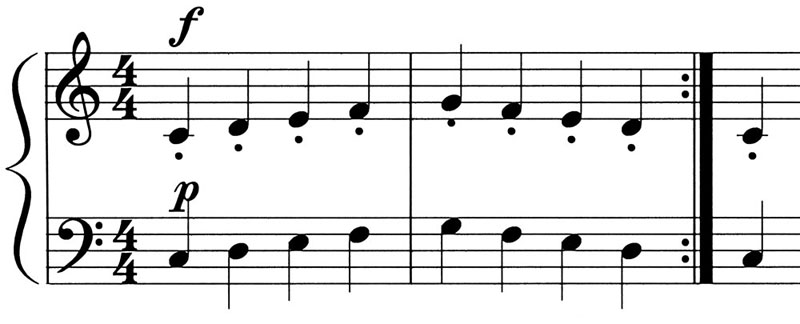
Pattern #9. LH Legato/Loud, RH Staccato/Soft

Pattern #10. LH Staccato, RH Legato, both Medium Loud
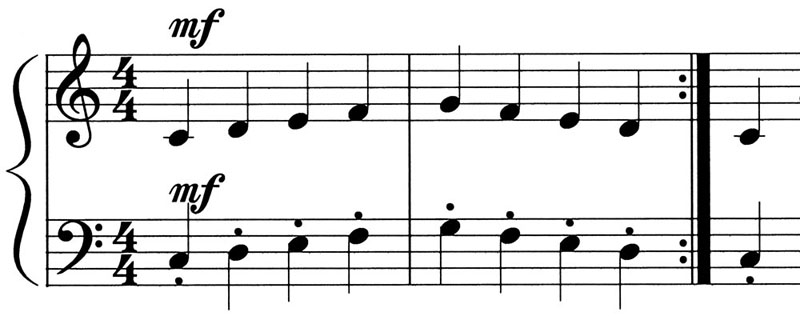
Pattern #11. LH Staccato/Soft, RH Legato/Loud
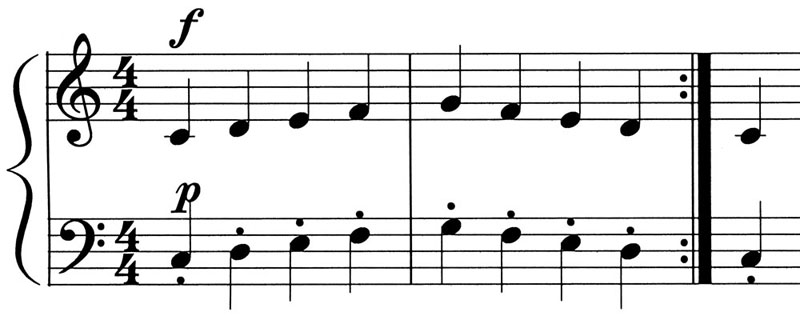
Pattern #12. LH Staccato/Loud, Right Hand Legato/Soft
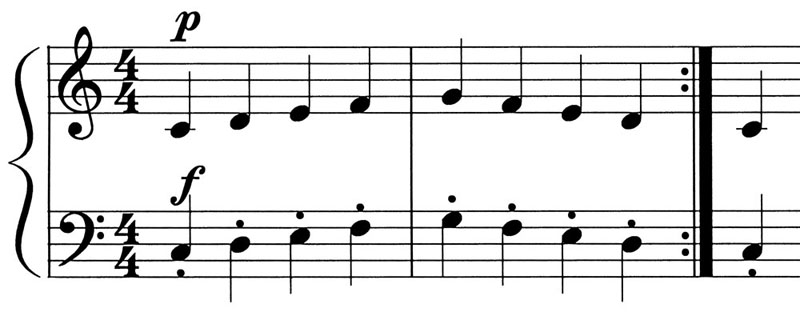
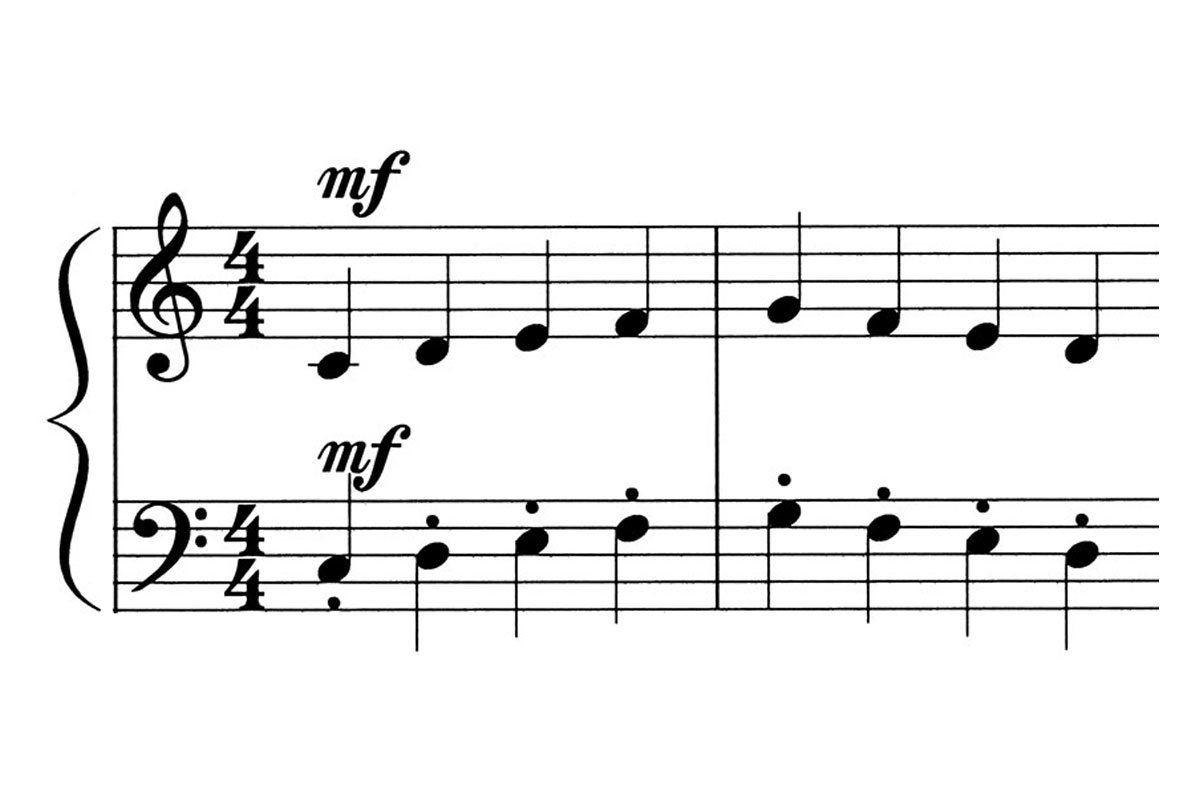
Leave a Reply